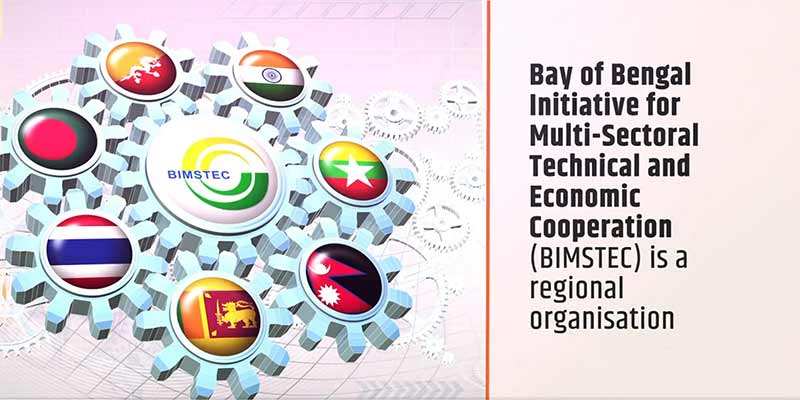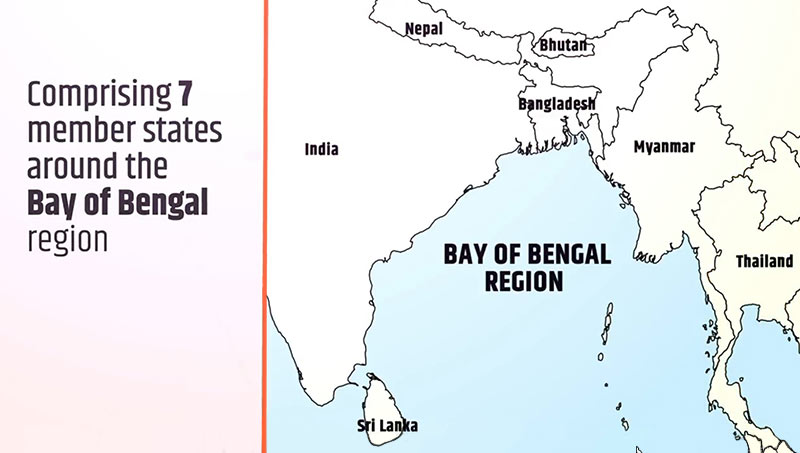- India
- Mar 10
Thailand hosts 19th BIMSTEC Ministerial Meeting
• Minister of State for External Affairs and Education Dr. Rajkumar Ranjan Singh participated in the 19th BIMSTEC Ministerial Meeting hosted by Chair Thailand virtually from Bangkok on March 9.
• The next summit of the BIMSTEC grouping is set to seal an agreement on maritime transport cooperation which is expected to boost trade among the member states.
• The rules of procedure for core BIMSTEC mechanisms, sectoral mechanisms and the grouping’s external relations were approved for submission to the sixth BIMSTEC summit.
• The sixth summit will be hosted by Thailand next year.
• As per leaders’ direction during the 2016 retreat, the agreement on maritime transport cooperation among the BIMSTEC member states initiated by India has been approved by the meeting for signature during the sixth BIMSTEC summit.
• The meeting also approved the terms of reference for an ‘Eminent Persons Group’ on the future directions of BIMSTEC which were finalised under the special scheme for institution building.
• The meeting also approved the BIMSTEC Bangkok Vision 2030 which would be launched at the sixth BIMSTEC Summit.
• The meeting approved administrative and disciplinary rules of the secretariat and amended financial rules and regulations of the BIMSTEC secretariat.
What is BIMSTEC?
• The Bay of Bengal Initiative for Multi-Sectoral Technical and Economic Cooperation (BIMSTEC) comprises India, Bangladesh, Myanmar, Sri Lanka, Thailand, Bhutan and Nepal.
• It is a regional bloc comprising seven countries lying in the littoral and adjacent areas of the Bay of Bengal constituting a contiguous regional unity.
• This sub-regional organisation came into being on June 6, 1997 through the Bangkok Declaration. It constitutes five countries from South Asia (Bangladesh, Bhutan, India, Nepal and Sri Lanka) and two from Southeast Asia (Myanmar and Thailand).
• Initially, the economic bloc was formed with four member states with the acronym BIST-EC (Bangladesh, India, Sri Lanka and Thailand Economic Cooperation). Following the inclusion of Myanmar on December 22, 1997 during a special ministerial meeting in Bangkok, the group was renamed BIMSTEC (Bangladesh, India, Myanmar, Sri Lanka and Thailand Economic Cooperation).
• With the admission of Nepal and Bhutan at the sixth ministerial meeting in February 2004, the name of the grouping was changed to Bay of Bengal Initiative for Multi-Sectoral Technical and Economic Cooperation (BIMSTEC).
• Bringing together over 1.7 billion people and a combined GDP of $3.7 trillion, the BIMSTEC has emerged as an influential engine of economic growth.
• The BIMSTEC Secretariat is situated in Dhaka.
• India has been pushing for making BIMSTEC a vibrant forum as various regional initiatives under South Asian Association for Regional Cooperation (SAARC) were not moving forward primarily due to non-cooperation from Pakistan.
• For India, BIMSTEC is a natural choice to take forward key foreign policy priorities like ‘Neighbourhood First’ and ‘Act East’ as the bloc enjoys the strength of connecting South and Southeast Asia.
• Initially, six sectors — trade, technology, energy, transport, tourism and fisheries — were included for sectoral cooperation. It was later expanded to 14 areas of cooperation.
Manorama Yearbook app is now available on Google Play Store and iOS App Store


